[Editor’s Note: The Information Environment (IE) is the point of departure for all events across the Multi-Domain Operations (MDO) spectrum. It’s a unique space that demands our understanding, as the Internet of Things (IoT) and hyper-connectivity have democratized accessibility, extended global reach, and amplified the effects of weaponized information. Our strategic competitors and adversaries have been quick to grasp and employ it to challenge our traditional advantages and exploit our weaknesses.
-
- Our near-peers confront us globally, converging IE capabilities with hybrid strategies to expand the battlefield across all domains and create hemispheric threats challenging us from home station installations (i.e., the Strategic Support Area) to the Close Area fight.
- Democratization of weaponized information empowers regional hegemons and non-state actors, enabling them to target the U.S. and our allies and achieve effects at a fraction of the cost of conventional weapons, without risking armed conflict.
- The IE enables our adversaries to frame the conditions of future competition and/or escalation to armed conflict on their own terms.
Today’s post imagines one such vignette, with Russia exploiting the IE to successfully out-compete us and accomplish their political objectives, without expending a single bullet!]
 Ethnic Russian minorities’ agitation against their respective governments in Estonia, Lithuania, and Latvia spike. Simultaneously, the Russian Government ratchets up tensions, with inflammatory statements of support for these ethnic Russian minorities in the Baltic States; coordinated movements and exercises by Russian ground, naval, and air forces adjacent to the region; and clandestine support to ethnic Russians in these States. The Russian Government started a covert campaign to shape people’s views about the threats against the Russian diaspora. More than 200,000 twitter accounts send 3.6 million tweets trending #protectRussianseverywhere. This sprawling Russian disinformation campaign is focused on building internal support for the Russian President and a possible military action. The U.S. and NATO respond…
Ethnic Russian minorities’ agitation against their respective governments in Estonia, Lithuania, and Latvia spike. Simultaneously, the Russian Government ratchets up tensions, with inflammatory statements of support for these ethnic Russian minorities in the Baltic States; coordinated movements and exercises by Russian ground, naval, and air forces adjacent to the region; and clandestine support to ethnic Russians in these States. The Russian Government started a covert campaign to shape people’s views about the threats against the Russian diaspora. More than 200,000 twitter accounts send 3.6 million tweets trending #protectRussianseverywhere. This sprawling Russian disinformation campaign is focused on building internal support for the Russian President and a possible military action. The U.S. and NATO respond…
 The 2nd Cav Regt is placed on alert; as it prepares to roll out of garrison for Poland, several videos surface across social media, purportedly showing the sexual assault of several underage German nationals by U.S. personnel. These disturbingly graphic deepfakes appear to implicate key Leaders within
The 2nd Cav Regt is placed on alert; as it prepares to roll out of garrison for Poland, several videos surface across social media, purportedly showing the sexual assault of several underage German nationals by U.S. personnel. These disturbingly graphic deepfakes appear to implicate key Leaders within  the Regiment. German political and legal authorities call for an investigation and host nation protests erupt outside the gates of Rose Barracks, Vilseck, disrupting the unit’s deployment.
the Regiment. German political and legal authorities call for an investigation and host nation protests erupt outside the gates of Rose Barracks, Vilseck, disrupting the unit’s deployment.
Simultaneously, in units comprising the initial Force Package earmarked to deploy to Europe, key personnel (and their dependents) are targeted, distracting troops from their deployment preparations and disrupting unit cohesion:
-
 Social media accounts are hacked/hijacked, with false threats by dependents to execute mass/school shootings, accusations of sexual abuse, hate speech posts by Leaders about their minority troops, and revelations of adulterous affairs between unit spouses.
Social media accounts are hacked/hijacked, with false threats by dependents to execute mass/school shootings, accusations of sexual abuse, hate speech posts by Leaders about their minority troops, and revelations of adulterous affairs between unit spouses.
-
- Bank accounts are hacked: some are credited with excessive amounts of cash followed by faux “See Something, Say Something” hotline accusations being made about criminal and espionage activities; while others are zeroed out, disrupting families’ abilities to pay bills.
 Russia’s GRU (Military Intelligence) employs AI Generative Adversarial Networks (GANs) to create fake persona injects that mimic select U.S. Active Army, ARNG, and USAR commanders making disparaging statements about their confidence in our allies’ forces, the legitimacy of the mission, and their faith in our political leadership. Sowing these injects across unit social media accounts, Russian Information Warfare specialists seed doubt and erode trust in the chain of command amongst a percentage of susceptible Soldiers, creating further friction in deployment preparations.
Russia’s GRU (Military Intelligence) employs AI Generative Adversarial Networks (GANs) to create fake persona injects that mimic select U.S. Active Army, ARNG, and USAR commanders making disparaging statements about their confidence in our allies’ forces, the legitimacy of the mission, and their faith in our political leadership. Sowing these injects across unit social media accounts, Russian Information Warfare specialists seed doubt and erode trust in the chain of command amongst a percentage of susceptible Soldiers, creating further friction in deployment preparations.
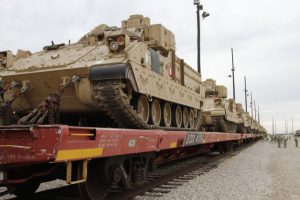 As these units load at railheads or begin their road march towards their respective ports of embarkation, Supervisory Control and Data Acquisition (SCADA) attacks are launched on critical rail, road, port, and airfield infrastructures, snarling rail lines, switching yards, and crossings; creating bottlenecks at key traffic intersections; and spoofing
As these units load at railheads or begin their road march towards their respective ports of embarkation, Supervisory Control and Data Acquisition (SCADA) attacks are launched on critical rail, road, port, and airfield infrastructures, snarling rail lines, switching yards, and crossings; creating bottlenecks at key traffic intersections; and spoofing  navigation systems to cause sealift asset collisions and groundings at key maritime chokepoints. The fly-by-wire avionics are hacked on a departing C-17, causing a crash with the loss of all 134 Soldiers onboard. All C-17s are grounded, pending an investigation.
navigation systems to cause sealift asset collisions and groundings at key maritime chokepoints. The fly-by-wire avionics are hacked on a departing C-17, causing a crash with the loss of all 134 Soldiers onboard. All C-17s are grounded, pending an investigation.
Salvos of personalized, “direct inject” psychological warfare attacks are launched against Soldiers via immersive media (Augmented, Virtual, and Mixed Reality; 360o Video/Gaming), targeting them while they await deployment and are in-transit to Theater. Similarly, attacks are vectored at spouses, parents, and dependents, with horrifying imagery of their loved ones’ torn and maimed bodies on Artificial Intelligence-generated battlefields (based on scraped facial imagery from social media accounts).
Multi-Domain Operations has improved Jointness, but exacerbated problems with “the communications requirements that constitute the nation’s warfighting Achilles heel.” As units arrive in Theater, seams within and between these U.S. and NATO Intelligence, Surveillance, and Reconnaissance; Fires; Sustainment; and Command and Control inter-connected and federated tactical networks that facilitate partner-to-partner data exchanges are exploited with specifically targeted false injects, sowing doubt and distrust across 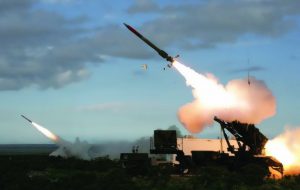 the alliance for the Multi-Domain Common Operating Picture. Spoofing of these systems leads to accidental air defense engagements, resulting in Blue-on-Blue fratricide or the downing of a commercial airliner, with additional civilian deaths on the ground from spent ordnance, providing more opportunities for Russian Information Operations to spread acrimony within the alliance and create dissent in public opinion back home.
the alliance for the Multi-Domain Common Operating Picture. Spoofing of these systems leads to accidental air defense engagements, resulting in Blue-on-Blue fratricide or the downing of a commercial airliner, with additional civilian deaths on the ground from spent ordnance, providing more opportunities for Russian Information Operations to spread acrimony within the alliance and create dissent in public opinion back home.
With the flow of U.S. forces into the Baltic Nations, real instances of ethnic Russians’ livelihoods being disrupted (e.g., accidental destruction of livestock and crops, the choking off of main routes to market, and damage to essential services [water, electricity, sewerage]) by maneuver units on exercise are captured on video and enhanced digitally to exacerbate their cumulative effects. Proliferated  across the net via bots, these instances further stoke anti-Baltic / anti-U.S. opinion amongst Russian-sympathetic and non-aligned populations alike.
across the net via bots, these instances further stoke anti-Baltic / anti-U.S. opinion amongst Russian-sympathetic and non-aligned populations alike.
Following years of scraping global social media accounts and building profiles across the full political spectrum, artificial influencers are unleashed on-line that effectively target each of these profiles within the U.S. and allied civilian populations. Ostensibly engaging populations via key “knee-jerk” on-line affinities (e.g., pro-gun, pro-choice, etc.), these artificial influencers, ever so subtly, begin to shift public opinion to embrace a sympathetic position on the rights of the Russian diaspora to greater autonomy in the Baltic States.
 The release of deepfake videos showing Baltic security forces massacring ethnic Russians creates further division and causes some NATO partners to hesitate, question, and withhold their support, as required under Article 5. The alliance is rent asunder — Checkmate!
The release of deepfake videos showing Baltic security forces massacring ethnic Russians creates further division and causes some NATO partners to hesitate, question, and withhold their support, as required under Article 5. The alliance is rent asunder — Checkmate!
Many of the aforementioned capabilities described in this vignette are available now. Threats in the IE space will only increase in verisimilitude with augmented reality and multisensory content interaction. Envisioning what this Bot 2.0 Competition will look like is essential in building whole-of-government countermeasures and instilling resiliency in our population and military formations.
The Mad Scientist Initiative will continue to explore the significance of the IE to Competition and Conflict and information weaponization throughout our FY20 events — stay tuned to the MadSci Laboratory for more information. In anticipation of this, we have published The Information Environment: Competition and Conflict anthology, a collection of previously published blog posts that serves as a primer on this topic and examines the convergence of technologies that facilitates information weaponization — Enjoy!
 In the latest episode of “The Convergence,” we talk with Lt. Gen. Eric Wesley, currently the Director of the Futures and Concepts Center, U.S. Army Futures Command, at Fort Eustis, Virginia.
In the latest episode of “The Convergence,” we talk with Lt. Gen. Eric Wesley, currently the Director of the Futures and Concepts Center, U.S. Army Futures Command, at Fort Eustis, Virginia. career, as well as on the National Security Council at the White House as the Director for Afghanistan-Pakistan Policy, and on the Army Staff as Deputy Director for Program Analysis and Evaluation (PAE) for the Army G8. Prior to taking over the Futures and Concepts Center, Lt. Gen. Wesley was the Commanding General of the U.S. Army Maneuver Center of Excellence at Fort Benning, Georgia. In this episode of “The Convergence,” we discuss multi-domain operations, modernization, and the future Army with Lt. Gen. Wesley.
career, as well as on the National Security Council at the White House as the Director for Afghanistan-Pakistan Policy, and on the Army Staff as Deputy Director for Program Analysis and Evaluation (PAE) for the Army G8. Prior to taking over the Futures and Concepts Center, Lt. Gen. Wesley was the Commanding General of the U.S. Army Maneuver Center of Excellence at Fort Benning, Georgia. In this episode of “The Convergence,” we discuss multi-domain operations, modernization, and the future Army with Lt. Gen. Wesley. Stay tuned to the Mad Scientist Laboratory as we will be releasing a new podcast every other week with exciting and impactful guests… our next episode will feature Michael Kanaan, Director of Operations, U.S. Air Force / MIT Artificial Intelligence.
Stay tuned to the Mad Scientist Laboratory as we will be releasing a new podcast every other week with exciting and impactful guests… our next episode will feature Michael Kanaan, Director of Operations, U.S. Air Force / MIT Artificial Intelligence. our short, on-line Global Perspectives Survey. Check out our initial findings here and stay tuned to future blog posts on the Mad Scientist Laboratory to learn what further insights we will have gleaned from this survey about operational environment trends, challenges, technologies, and disruptors.
our short, on-line Global Perspectives Survey. Check out our initial findings here and stay tuned to future blog posts on the Mad Scientist Laboratory to learn what further insights we will have gleaned from this survey about operational environment trends, challenges, technologies, and disruptors.


 • Nonfiction only.
• Nonfiction only.


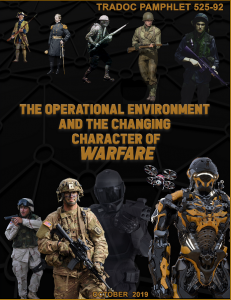 The
The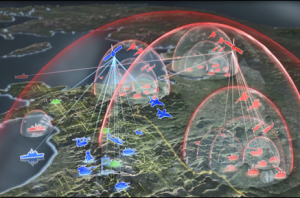
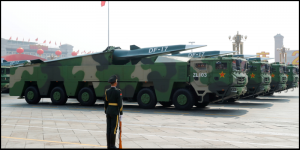
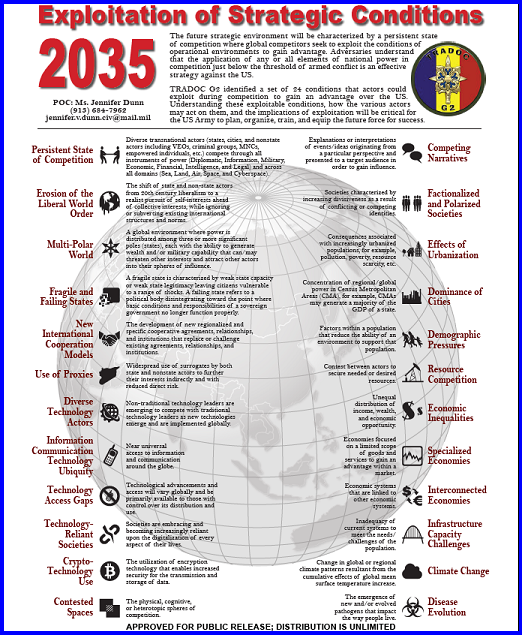
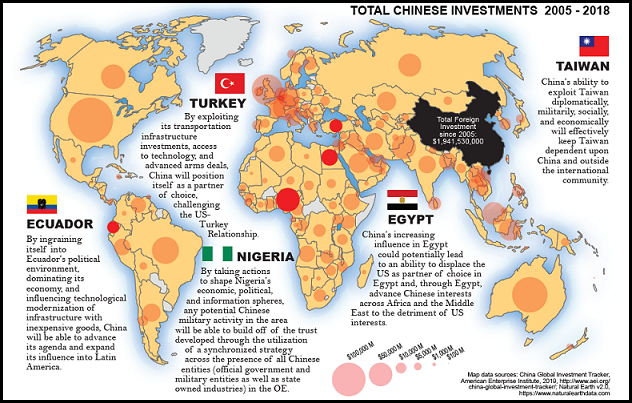


 Ethnic Russian minorities’ agitation against their respective governments in Estonia, Lithuania, and Latvia spike. Simultaneously, the Russian Government ratchets up tensions, with inflammatory statements of support for these ethnic Russian minorities in the Baltic States; coordinated movements and exercises by Russian ground, naval, and air forces adjacent to the region; and clandestine support to ethnic Russians in these States. The Russian Government started a covert campaign to shape people’s views about the threats against the Russian diaspora. More than 200,000 twitter accounts send 3.6 million tweets trending #protectRussianseverywhere. This sprawling Russian disinformation campaign is focused on building internal support for the Russian President and a possible military action. The U.S. and NATO respond…
Ethnic Russian minorities’ agitation against their respective governments in Estonia, Lithuania, and Latvia spike. Simultaneously, the Russian Government ratchets up tensions, with inflammatory statements of support for these ethnic Russian minorities in the Baltic States; coordinated movements and exercises by Russian ground, naval, and air forces adjacent to the region; and clandestine support to ethnic Russians in these States. The Russian Government started a covert campaign to shape people’s views about the threats against the Russian diaspora. More than 200,000 twitter accounts send 3.6 million tweets trending #protectRussianseverywhere. This sprawling Russian disinformation campaign is focused on building internal support for the Russian President and a possible military action. The U.S. and NATO respond… The 2nd Cav Regt is placed on alert; as it prepares to roll out of garrison for Poland, several videos surface across social media, purportedly showing the sexual assault of several underage German nationals by U.S. personnel. These disturbingly graphic
The 2nd Cav Regt is placed on alert; as it prepares to roll out of garrison for Poland, several videos surface across social media, purportedly showing the sexual assault of several underage German nationals by U.S. personnel. These disturbingly graphic  the Regiment. German political and legal authorities call for an investigation and host nation protests erupt outside the gates of Rose Barracks, Vilseck, disrupting the unit’s deployment.
the Regiment. German political and legal authorities call for an investigation and host nation protests erupt outside the gates of Rose Barracks, Vilseck, disrupting the unit’s deployment. Social media accounts are hacked/hijacked, with false threats by dependents to execute mass/school shootings, accusations of sexual abuse, hate speech posts by Leaders about their minority troops, and revelations of adulterous affairs between unit spouses.
Social media accounts are hacked/hijacked, with false threats by dependents to execute mass/school shootings, accusations of sexual abuse, hate speech posts by Leaders about their minority troops, and revelations of adulterous affairs between unit spouses. Russia’s GRU (Military Intelligence) employs AI Generative Adversarial Networks (GANs) to create fake persona injects that mimic select U.S. Active Army, ARNG, and USAR commanders making disparaging statements about their confidence in our allies’ forces, the legitimacy of the mission, and their faith in our political leadership. Sowing these injects across unit social media accounts, Russian Information Warfare specialists seed doubt and erode trust in the chain of command amongst a percentage of susceptible Soldiers, creating further friction in deployment preparations.
Russia’s GRU (Military Intelligence) employs AI Generative Adversarial Networks (GANs) to create fake persona injects that mimic select U.S. Active Army, ARNG, and USAR commanders making disparaging statements about their confidence in our allies’ forces, the legitimacy of the mission, and their faith in our political leadership. Sowing these injects across unit social media accounts, Russian Information Warfare specialists seed doubt and erode trust in the chain of command amongst a percentage of susceptible Soldiers, creating further friction in deployment preparations. As these units load at railheads or begin their road march towards their respective ports of embarkation,
As these units load at railheads or begin their road march towards their respective ports of embarkation,  navigation systems to cause sealift asset collisions and groundings at key maritime chokepoints. The fly-by-wire avionics are hacked on a departing C-17, causing a crash with the loss of all 134 Soldiers onboard. All C-17s are grounded, pending an investigation.
navigation systems to cause sealift asset collisions and groundings at key maritime chokepoints. The fly-by-wire avionics are hacked on a departing C-17, causing a crash with the loss of all 134 Soldiers onboard. All C-17s are grounded, pending an investigation. the alliance for the Multi-Domain Common Operating Picture. Spoofing of these systems leads to accidental air defense engagements, resulting in Blue-on-Blue fratricide or the downing of a commercial airliner, with additional civilian deaths on the ground from spent ordnance, providing more opportunities for Russian Information Operations to spread acrimony within the alliance and create dissent in public opinion back home.
the alliance for the Multi-Domain Common Operating Picture. Spoofing of these systems leads to accidental air defense engagements, resulting in Blue-on-Blue fratricide or the downing of a commercial airliner, with additional civilian deaths on the ground from spent ordnance, providing more opportunities for Russian Information Operations to spread acrimony within the alliance and create dissent in public opinion back home. across the net via bots, these instances further stoke anti-Baltic / anti-U.S. opinion amongst Russian-sympathetic and non-aligned populations alike.
across the net via bots, these instances further stoke anti-Baltic / anti-U.S. opinion amongst Russian-sympathetic and non-aligned populations alike. The release of deepfake videos showing Baltic security forces massacring ethnic Russians creates further division and causes some NATO partners to hesitate, question, and withhold their support, as required under Article 5. The alliance is rent asunder — Checkmate!
The release of deepfake videos showing Baltic security forces massacring ethnic Russians creates further division and causes some NATO partners to hesitate, question, and withhold their support, as required under Article 5. The alliance is rent asunder — Checkmate!
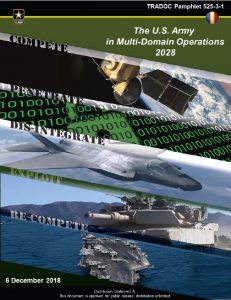 Assumption: The United States will maintain sufficient Defense spending as a percentage of its GDP to modernize the Multi-Domain Operations (MDO) force. [Related MDO Baseline Assumption – “b. The Army will adjust to fiscal constraints and have resources sufficient to preserve the balance of readiness, force structure, and modernization necessary to meet the demands of the national defense strategy in the mid-to far-term (2020-2040),”
Assumption: The United States will maintain sufficient Defense spending as a percentage of its GDP to modernize the Multi-Domain Operations (MDO) force. [Related MDO Baseline Assumption – “b. The Army will adjust to fiscal constraints and have resources sufficient to preserve the balance of readiness, force structure, and modernization necessary to meet the demands of the national defense strategy in the mid-to far-term (2020-2040),” 
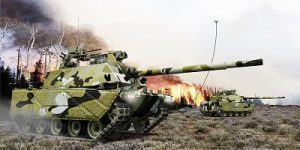 timeframe. Similarly, the Congressional Budget Office (CBO) estimates that costs will steadily climb after 2023. Their base budget in 2033 is projected to be approximately $735 billion — that is an 11% increase over ten years. This is due to rising compensation rates, growing costs of operations and maintenance, and the purchasing of new weapons systems.
timeframe. Similarly, the Congressional Budget Office (CBO) estimates that costs will steadily climb after 2023. Their base budget in 2033 is projected to be approximately $735 billion — that is an 11% increase over ten years. This is due to rising compensation rates, growing costs of operations and maintenance, and the purchasing of new weapons systems. decisions for less exquisite weapons systems. A smaller active force might also drive changes to Multi-Domain Operations and how the Army describes the way it will fight in the future.
decisions for less exquisite weapons systems. A smaller active force might also drive changes to Multi-Domain Operations and how the Army describes the way it will fight in the future.